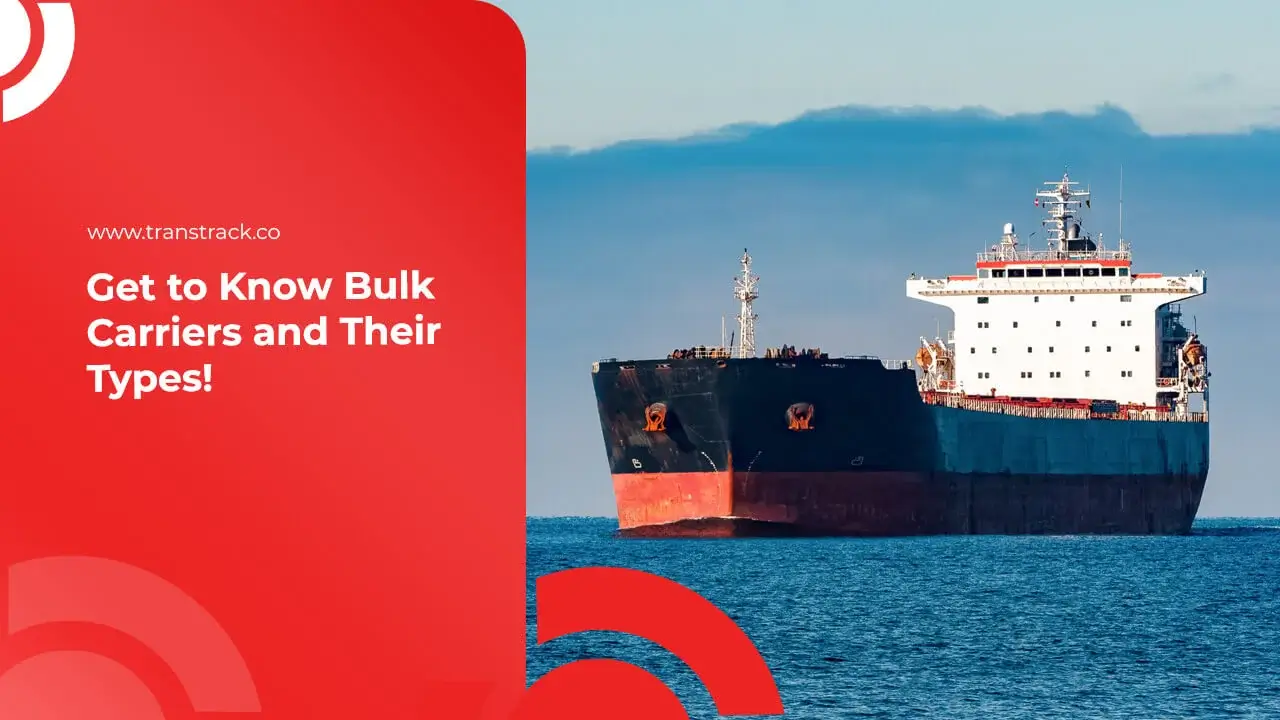Get to Know Bulk Carriers and Their Types!
Posted on April 9, 2024 by Nur Wachda Mihmidati

In the world of international trade, bulk carriers play a vital role as the backbone of bulk cargo transportation across the oceans. As giants of the sea that transport a wide variety of cargo, from iron ore to wheat, bulk carriers are indispensable drivers of the global economy.
With their tremendous size and capacity, bulk carriers have the ability to transport massive amounts of cargo with great efficiency, connecting ports from different parts of the world. However, behind their splendor, there are huge challenges to face, from risk management to cargo safety.
In this article TransTRACK, we will explore more about the role and challenges of bulk carriers in the shipping industry, as well as innovative solutions that can help improve their operational efficiency and safety. Let’s take a look at how the latest technologies and practices have changed the shipping landscape, and how bulk carriers are adapting to meet future challenges.
What is a bulk carrier
Bulk carriers are a type of cargo ship specifically designed to transport large quantities of cargo in bulk form such as grain, coal, iron ore, and other raw materials. These vessels have open or enclosed cargo holds and do not have storage or packaging facilities like those commonly found on container ships. Bulk carriers usually have a special design to optimize cargo and navigation efficiency in transporting bulk cargo. These vessels have several types of classifications based on the size and type of cargo they carry, such as handysize, supramax, and capesize. Bulk carriers are an integral part of the global shipping industry that transports the majority of the world’s freight.
Types of bulk carriers
The following are some of the common types of bulk carriers found in the shipping industry:
Mini Bulker
Mini-bulkers usually have a relatively small cargo capacity, often less than 10,000 metric tons. They are used to transport small amounts of cargo between local or regional ports that may be difficult for larger vessels to reach. An example would be vessels transporting coal between islands in Indonesia.
Handysize Bulker
Handysize bulker has a cargo capacity between 10,000 to 35,000 metric tons. They are typically used to transport cargo such as iron ore, coal, and sand between regional ports. Handysize bulker is often used to access smaller or remote ports around the world.
Handymax Bulker
Handymax barges are slightly larger than handysize barges, with a cargo capacity between 35,000 and 60,000 metric tons. They can carry medium to large loads on various global trade routes, and are often used to transport more diverse cargo such as iron ore, coal, fertilizer and other raw materials.
Panamax Bulker
Panamax bulker is designed to be able to cross the Panama canal at the maximum size allowed. They have a cargo capacity of between 60,000 and 80,000 metric tons. Panamax bulker is commonly used to transport cargo between North America and South America to Asia and Europe, passing through the Panama canal.
Kamsarmax Bulker
The Kamsarmax bulker is a larger version of the Panamax bulker, with a load capacity of between 80,000 and 100,000 metric tons. They are designed to fit the dimensions of the port in Kamsar, Guinea, which is a major bauxite export site. These vessels are often used to transport iron ore and coal cargoes.
Capesize Bulker
These ships have a very large cargo capacity, usually over 100,000 metric tons, and are not limited by certain dimensional restrictions such as the Panama or Kamsar canals. Capesize bulker is often used to transport coal, iron ore, and other commodities in bulk on open ocean trade routes such as from Australia to China.
Ultra Large Ore Carrier (ULOC)
ULOC vessels are a type of very large bulk carrier, specifically used to transport large quantities of iron ore. They have load capacities that exceed 200,000 metric tons and are often used in trade on routes that require vessels with large capacities, such as the Australia-Asia or Brazil-China routes. ULOCs are generally specially designed to accommodate large cargo requirements and have specialized loading facilities suited to iron ore.
In the world of shipping, operational optimization and cargo security are key to success. By choosing the best solution to protect and track cargo, such as E-Seal from TransTRACK, bulk carriers can improve their operational efficiency while keeping valuable cargo safe.
By utilizing this advanced technology, companies can deliver better service to their customers, ensuring timely and safe delivery. Start changing your business paradigm with E-Seal from TransTRACK and witness improvements in efficiency, security, and customer satisfaction.
So, don’t hesitate anymore! Improve your company’s operations and get ahead of the shipping industry with this reliable and innovative solution. Contact us today and discover how E-Seal from TransTRACK can help realize the full potential of your business in the bulk carrier industry.
Recent Post
Topic :
 Bahasa Indonesia
Bahasa Indonesia









